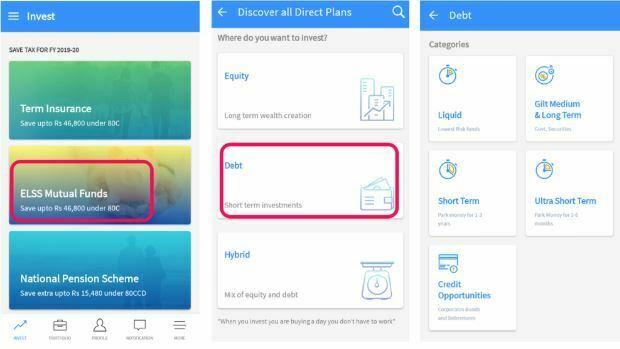
The categorization of debt funds is simpler than the Equity Funds. Debt funds are the debt papers/ bonds issued either by the government or the firms or both. When a company needs money for both short term and long term purpose, they have the option of issuing the bonds. A bond will pay regular interest to the lenders, and then at maturity, it will repay principal- same as FD’s. There is a wide range of debt products available in the market with different maturity periods. Long term bonds are generally issued by the governments and short term bonds are issued both by the companies and the governments.
Don’t buy the bond directly from the company.
Generally, the bond that we buy from companies is “company deposits”. We shouldn’t buy because as an individual, it will be difficult for us to analyze the moves of the company and we buy bonds from 2 or 3 companies and in the mutual fund, we will have a bond of at least 25 to 30 companies.
Even if one out of three bonds performs badly, the entire profit will be affected and this will not happen when we hold bonds in mutual funds, any hit on one bond will be a fraction. This is what we called diversification of funds- we reduce the risk by increasing the number of products in our portfolio.
Always remember the bond which we are planning to buy should always match up with the time horizon because we make investments to meet the future needs. We will buy short term bonds if need our money in the near term and vice versa.
Alternative: Debt Mutual Funds
Debt Mutual Funds are those funds where the investments are made in debt or fixed income securities such as government securities, corporate bonds, and money market instruments. Investors who can invest in these funds are those who are risk averse and want to maintain stability in their asset portfolio. And these Debt funds come up with tax deductions and are highly liquid. They are “Safe investment instrument”
Types of Debt Funds:
We can classify the debt funds based on time and returns. Firstly, we should decide upon the holding period of the bond and then the returns that we are expecting. There are plenty of debt funds available in the market, before buying, use the logic and look for the products that satisfy your needs.
We can see the ups and downs in the value of the bonds. When there is a fall in the interest rates, the older bonds that are locked for higher rates will have more value and vice versa. So, what’s more, important is the “Residual Time”- the time left until the date of redemption.
Why is “Residual time” is important?
When interest rate falls the older high-rates bonds will have more value. And also, one which has 10 years left for maturity will have more value than the one which has a maturity of 1 year because we will be getting paid the higher returns for the next 10 years. Thus, Residual maturity determines the risk and return of the bonds.
- Liquid funds:
Investment in debt and money market instruments ( treasury bills, call money, and government securities) with maturity up to 91 days only. These funds are highly liquid and the offers a low return and risk associated with these funds are very less.
- Overnight funds:
Investors who are risk-averse can buy overnight funds because these are not subjected to high market fluctuations and a period of maturity is only one day.
- Ultra-short-duration funds:
These come up with the maturity of not more than one year. These are suitable for investors who are ready to take up a marginal risk to have high returns.
- Short term funds:
Investments are made in these funds for not less than one year and more than 5 years and it best suits the investors who are ready to take moderate risk.
- Dynamic funds:
These are the funds with a variety class of bonds with different maturity levels. They are dynamic because the portfolio which includes these funds varies dynamically with the changing interest rates.
- Durational funds:
Funds are classified based on durations.
| Bonds | Duration |
| Low term | 6-8 months |
| Short term | 1-3 years |
| Medium term | 3-4 years |
| Medium to Long term | 4-7 years |
| Long term | More than 7 years |
- Income funds:
Investments in securities with an average maturity period of more than 4.5 years.they are highly vulnerable to the change in interest rates. These are suitable to the investors who are ready to take high risk and willing to have investments of the longer term.
- Corporate bond funds:
These are high rated bonds where 80% of the corpus will be invested in corporate bonds.
- Credit risk funds:
Here, a minimum of 65% is invested in corporate bonds. The returns earned from these are tax exempted. However, the returns earned within 3 years are taxable (short term capital gain).
- Gilt funds:
80% of the investments will be made in government securities. “Guilt” is the securities which are issued by the government. they provide a considerable return and are not subject to market fluctuations.
- Floaters funds:
These bonds will have floating interest rates. The investors will earn when the interest rate goes down and the price of bonds moves up.
Now that you have a fair idea about Debt Funds, take some time and evaluate your needs and financial goals, choose and match the right fund that would serve your investment purpose and yield suitable returns.

Invest in Fisdom – a top rated Mutual fund app in India!





















